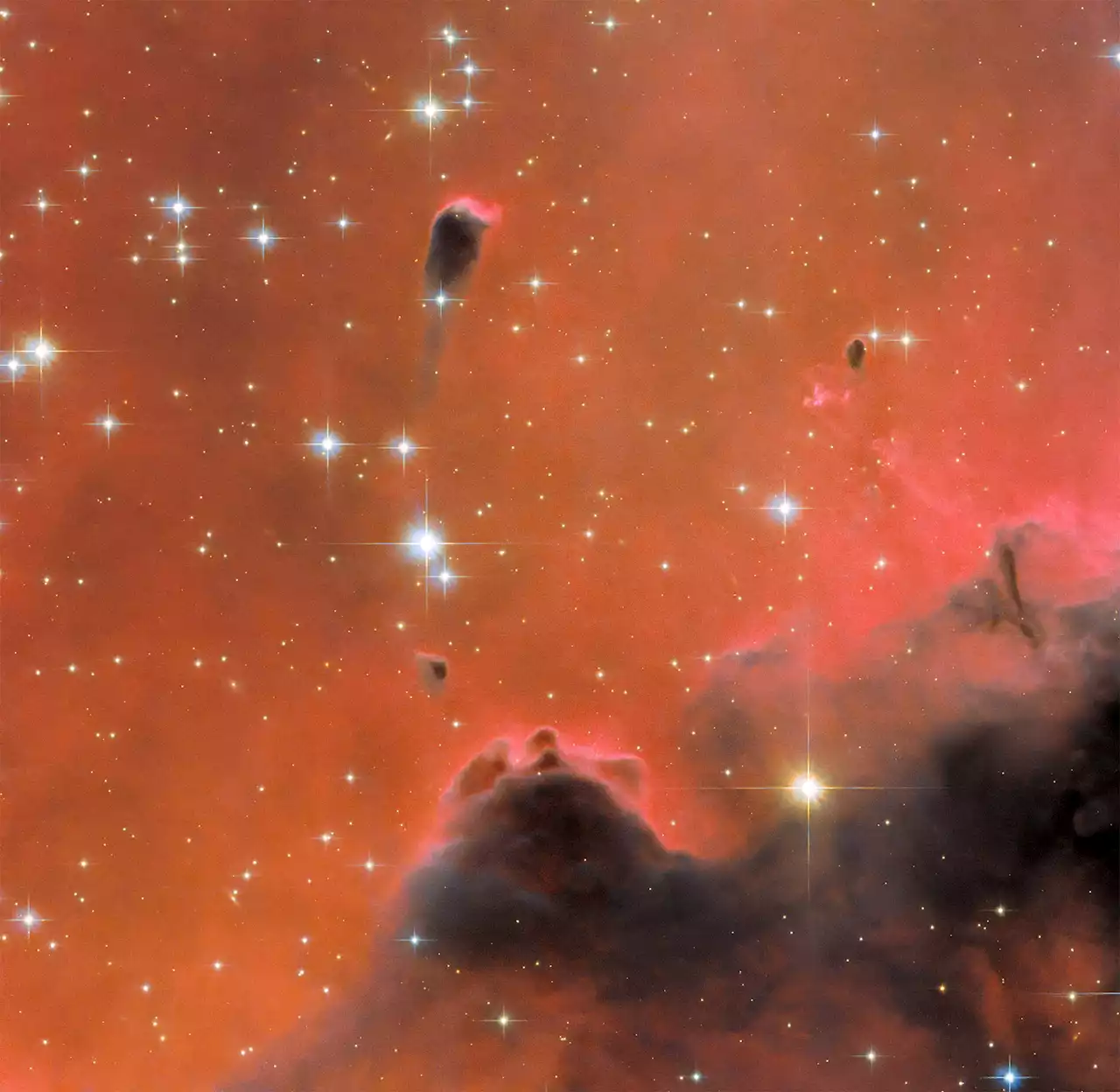Just in time for Christmas, this new Picture of the Week from the Hubble Space Telescope features a glistening scene in holiday red. This festive image shows a small region of the well-known nebula Westerhout 5, which is located approximately 7,000 light-years from Earth. Suffused with bright red li
Westerhout 5, which is located approximately 7,000 light-years from Earth. Suffused with bright red light, this luminous image hosts a variety of interesting features, including a free-floating Evaporating Gaseous Globule . The frEGG in this image is the small tadpole-shaped dark region in the upper center-left. This buoyant-looking bubble is lumbered with two rather uninspiring names — [KAG2008] globule 13 and J025838.6+604259.
FrEGGs are a particular class of Evaporating Gaseous Globules . Both frEGGs and EGGs are regions of gas that are sufficiently dense that they photoevaporate less easily than the less compact gas surrounding them. Photoevaporation occurs when gas is ionized and dispersed away by an intense source of radiation — typically young, hotreleasing vast amounts of ultraviolet light.
These columns that resemble stalagmites protruding from the floor of a cavern are in fact cool interstellar hydrogen gas and dust that act as incubators for new stars. Inside them and on their surface astronomers have found knots or globules of denser gas. These are called EGGs . Inside at least some of the EGGs stars are being formed. Credit NASA, ESA, STScI, J. Hester and P. Scowen
FrEGGs were classified even more recently, and are distinguished from EGGs by being detached and having a distinct ‘head-tail’ shape. FrEGGs and EGGs are of particular interest because their density makes it more difficult for intense UV radiation, found in regions rich in young stars, to penetrate them. Their relative opacity means that the gas within them is protected from ionization and photoevaporation.
The frEGG in this image is a dark spot in the sea of red light. The red color is caused by a particular type of light emission known as H-alpha emission. This happens when an extremely energetic electron within a hydrogenloses a specific amount of energy, leading to the electron becoming less energetic and releasing this recognizable red light.
United States Latest News, United States Headlines
Similar News:You can also read news stories similar to this one that we have collected from other news sources.
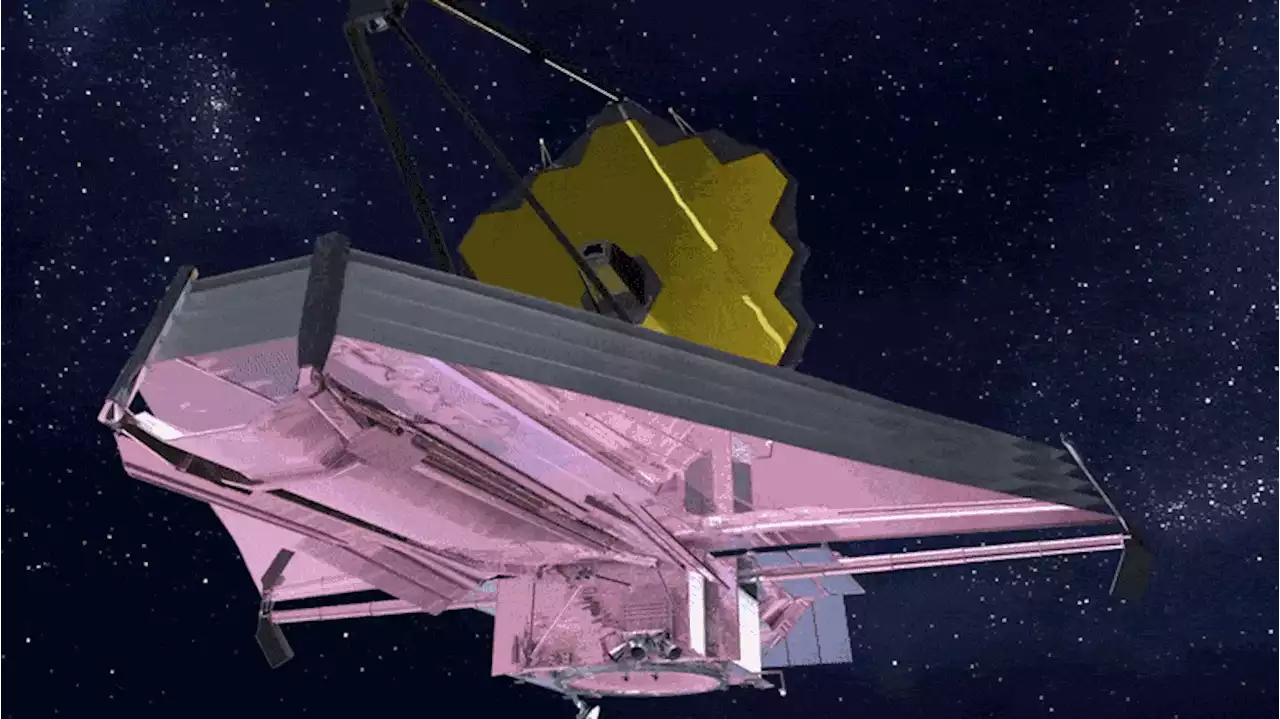 Science’s 2022 Breakthrough of the Year: NASA’s Stellar New James Webb Space TelescopeAfter numerous setbacks, 20 years of development, a hefty $10 billion dollar price tag, and a perilous 1-million-mile (1.5-million-kilometer) journey into space, the new James Webb Space Telescope (JWST) finally opened its golden, infrared eye and gave us a glimpse of our universe – and its unfathom
Science’s 2022 Breakthrough of the Year: NASA’s Stellar New James Webb Space TelescopeAfter numerous setbacks, 20 years of development, a hefty $10 billion dollar price tag, and a perilous 1-million-mile (1.5-million-kilometer) journey into space, the new James Webb Space Telescope (JWST) finally opened its golden, infrared eye and gave us a glimpse of our universe – and its unfathom
Read more »
 Space Cases: The Weirdest Legal Claims in Outer SpaceWired takes a look at some of the strangest and most spurious legal claims on outer space.
Space Cases: The Weirdest Legal Claims in Outer SpaceWired takes a look at some of the strangest and most spurious legal claims on outer space.
Read more »
 Russia may expedite launch of next space capsule after leakRoscosmos said a coolant leak from a Russian space capsule attached to the International Space Station doesn't require evacuation of its crew, but the agency kept open the possibility of launching a replacement capsule, if needed.
Russia may expedite launch of next space capsule after leakRoscosmos said a coolant leak from a Russian space capsule attached to the International Space Station doesn't require evacuation of its crew, but the agency kept open the possibility of launching a replacement capsule, if needed.
Read more »
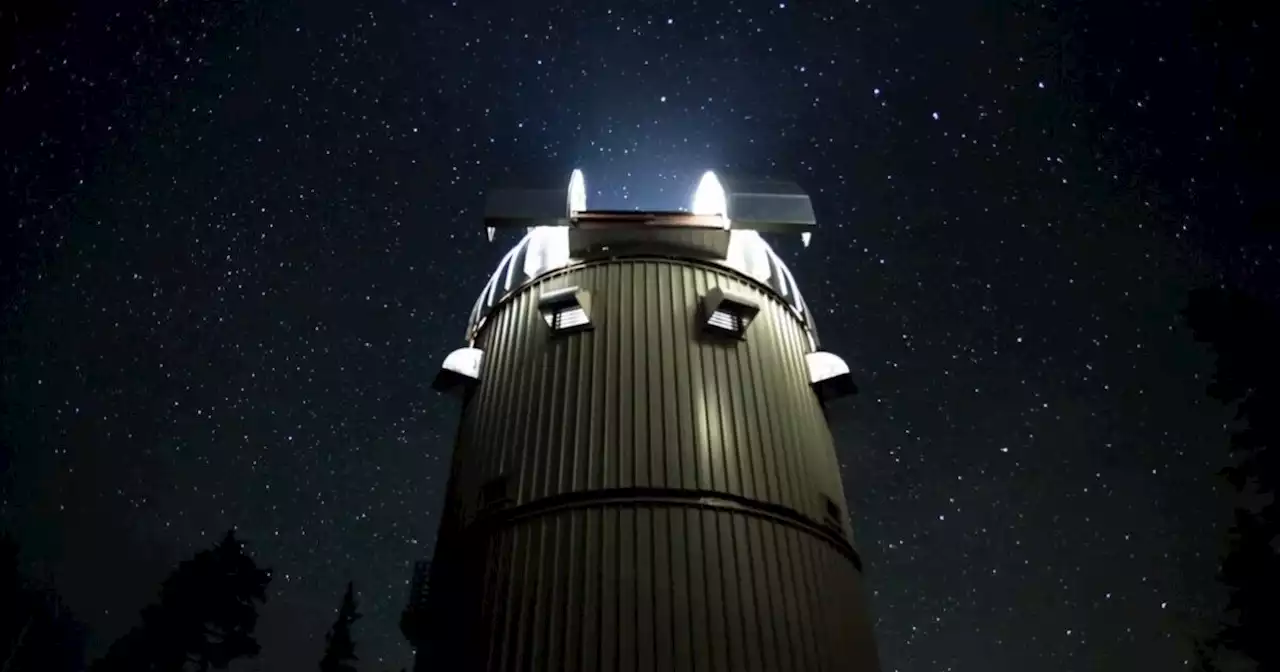 Why the Pope's telescope is in Southern ArizonaIt might surprise you to learn that Mt. Graham, near Safford, is home to a telescope operated by the Vatican. Not only that, Tucson is home to an official 'seat of the Vatican,' where those researchers live and work.
Why the Pope's telescope is in Southern ArizonaIt might surprise you to learn that Mt. Graham, near Safford, is home to a telescope operated by the Vatican. Not only that, Tucson is home to an official 'seat of the Vatican,' where those researchers live and work.
Read more »
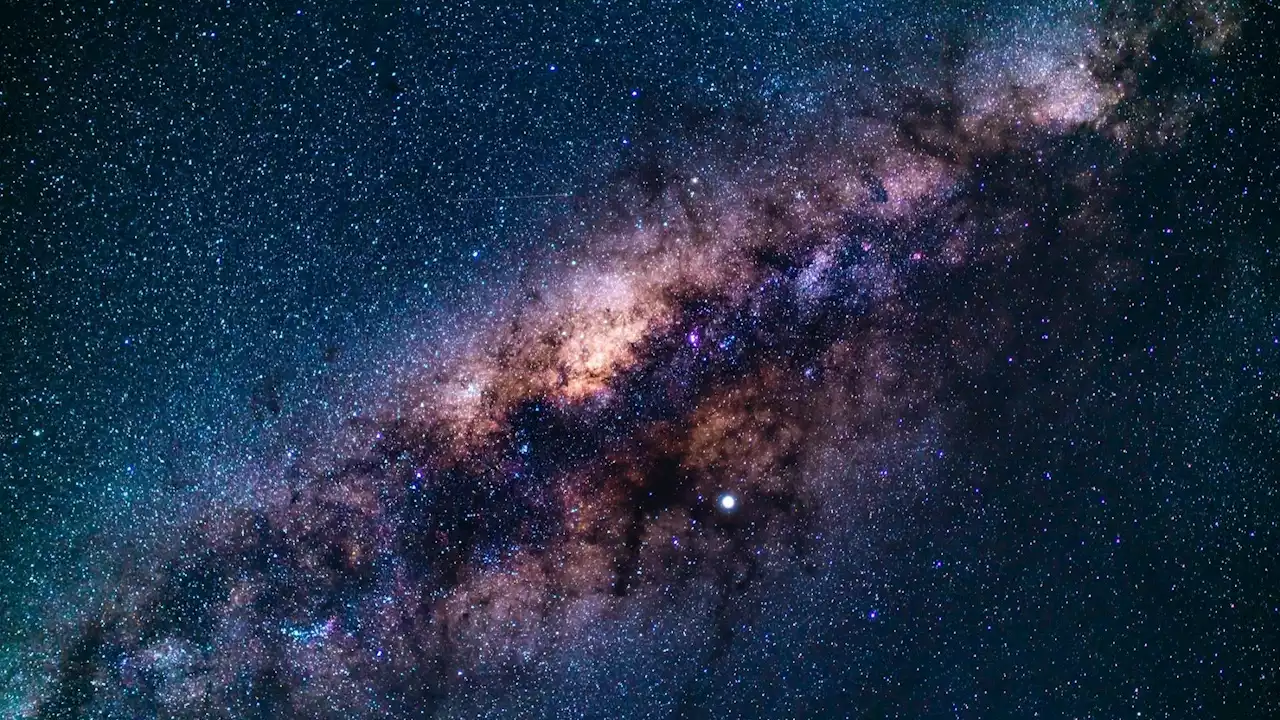 Dark matter: How the ESA's tiny telescope will reveal more about this mysteryThe European Space Agency recently announced a new mission of its science program: a small telescope orbiting the Earth dubbed Arrakhis.
Dark matter: How the ESA's tiny telescope will reveal more about this mysteryThe European Space Agency recently announced a new mission of its science program: a small telescope orbiting the Earth dubbed Arrakhis.
Read more »
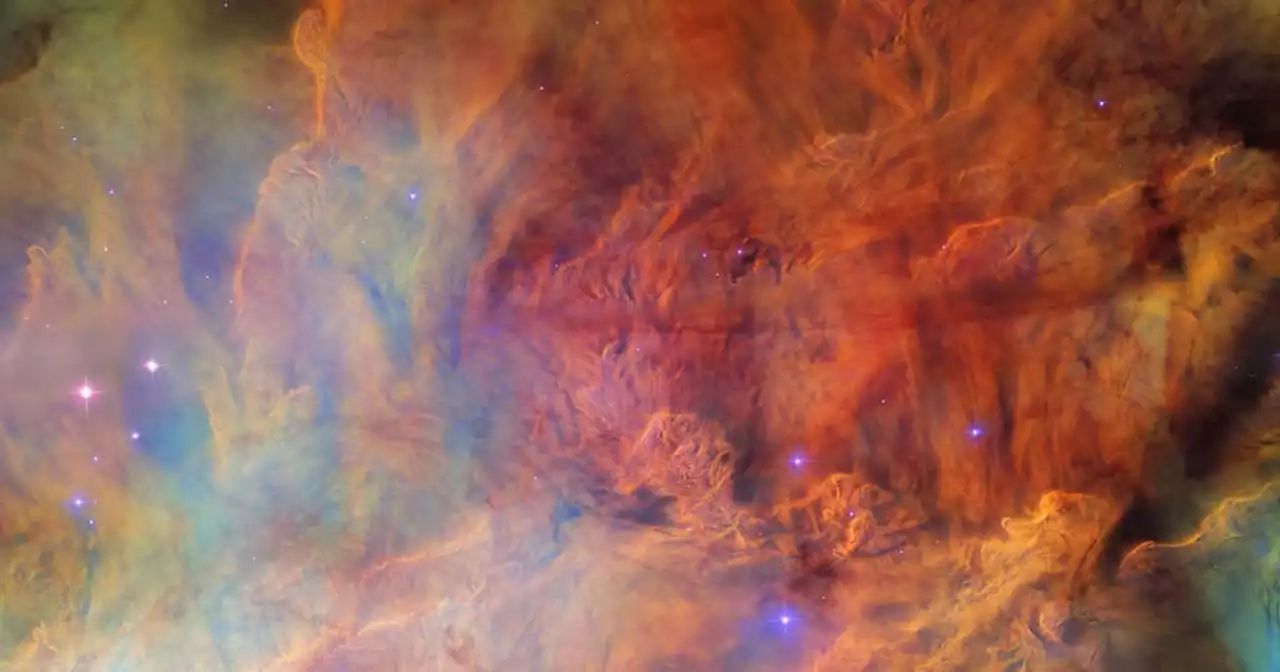 See a closeup of the stunning Lagoon Nebula in Hubble image | Digital TrendsHubble has imaged a cluster of thousands of stars shrouded in dust, which makes up a small part of the huge and beautiful LagoonNebula.
See a closeup of the stunning Lagoon Nebula in Hubble image | Digital TrendsHubble has imaged a cluster of thousands of stars shrouded in dust, which makes up a small part of the huge and beautiful LagoonNebula.
Read more »
